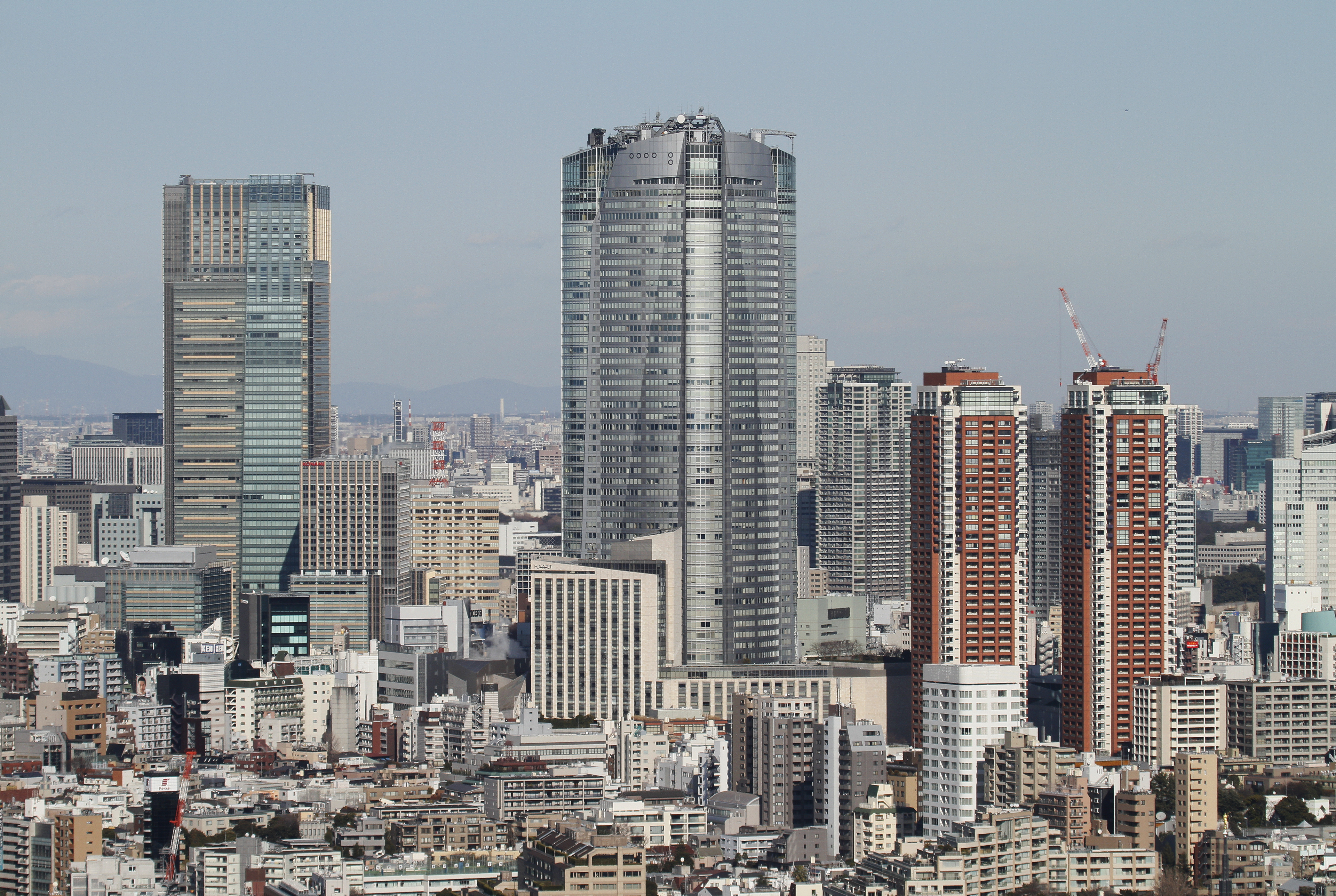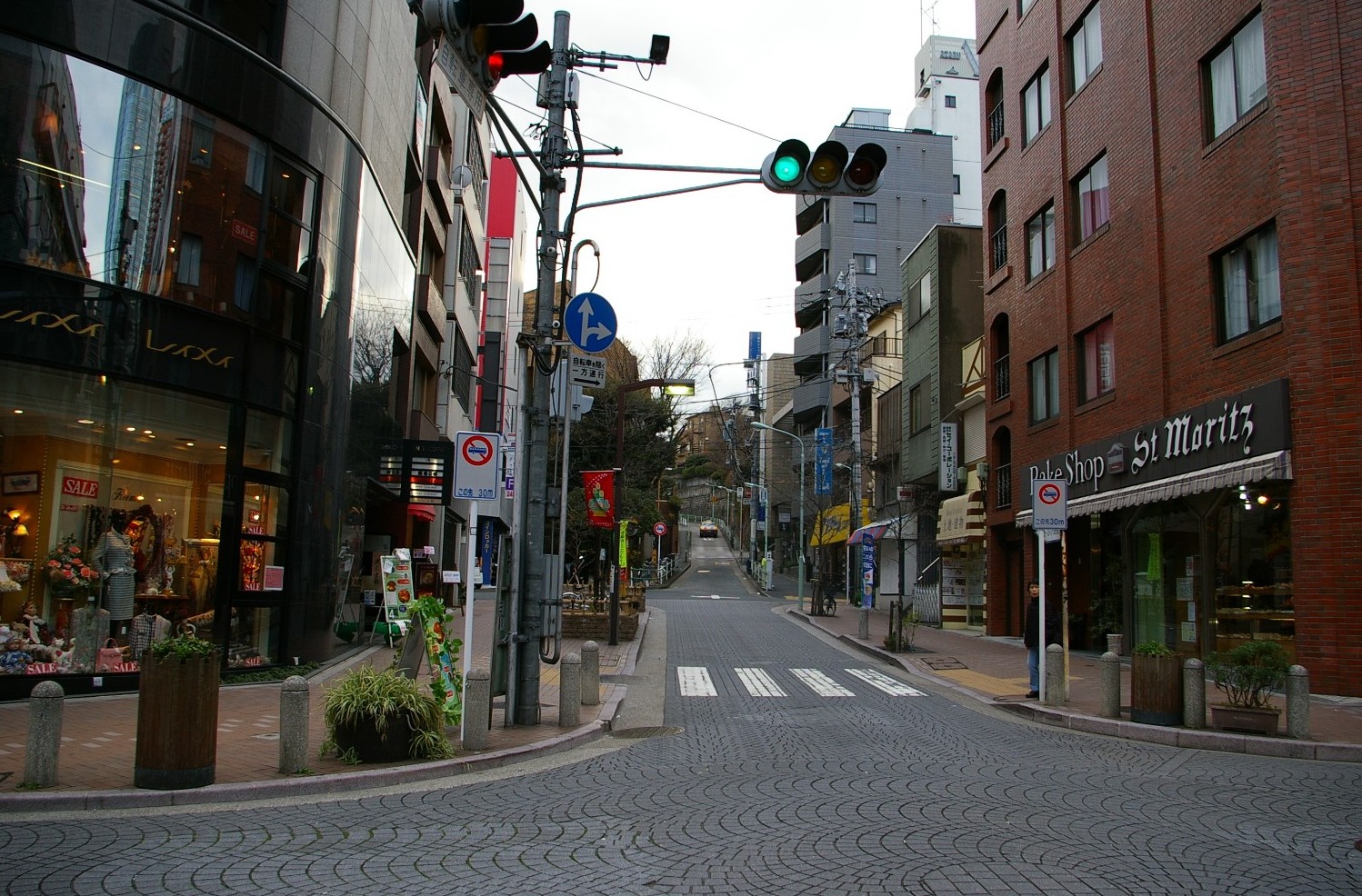|
Moto-Azabu Hills
is a district of Minato, Tokyo, Japan. The district is home to Zenpuku-ji, a JŇćdo ShinshŇę temple also known as . The embassy of China in Tokyo, and former embassy of Manchuria before World War II, are located in this area. Moto-Azabu borders Nishi-Azabu on the west, Minami-Azabu on the south, Azabu-JŇęban on the east, and Roppongi on the north. Education Minato City Board of Education operates public elementary and junior high schools. Moto-Azabu 1- chŇćme 1-4 ban, 2-chŇćme 5-6 and 11-13 ban, and 3-chŇćme 1-3 and 5-13 ban are zoned to Nanzan Elementary School ( ŚćóŚĪĪŚįŹŚ≠¶ś†°). Moto-Azabu 1-chome 6-7 ban are zoned to Higashimachi Elementary School ( śĚĪÁĒļŚįŹŚ≠¶ś†°). Moto-Azabu 1-chŇćme 5-ban and 2-chŇćme 7-10 and 14 ban are zoned to Hommura Elementary School ( śú¨śĚĎŚįŹŚ≠¶ś†°). Moto-Azabu 2-chŇćme 1-4 ban and 3-chŇćme 4-ban are zoned to Kogai Elementary School ( Á¨ĄŚįŹŚ≠¶ś†°). The Nanzan and Higashimachi elementary zones feed into Roppongi Junior High School ( ŚÖ≠śú¨ś ... [...More Info...] [...Related Items...] OR: [Wikipedia] [Google] [Baidu] |
Roppongi
is a district of Minato, Tokyo, Japan, famous for the affluent Roppongi Hills development area and popular night club scene. A few foreign embassies are located near Roppongi, and the night life is popular with locals and foreigners alike. It is in the central part of Tokyo, south of Akasaka and north of Azabu. History The name ''Roppongi'', which appears to have been coined around 1660, literally means "six trees". Six very old and large zelkova trees used to mark the area; the first three were cleared, and the last were destroyed during World War II. Another legend has it that the name comes from the fact that six ''daimyŇćs'' lived nearby during the Edo period, each with the kanji character for "tree" or a kind of tree in their names. Roppongi was not extensively populated until after the Meiji Restoration, although the area was trafficked for centuries and served as the site of the cremation of ShŇćgun Tokugawa Hidetada's wife in 1626.Gary CooperGood ol' six trees‚ÄĒthe ... [...More Info...] [...Related Items...] OR: [Wikipedia] [Google] [Baidu] |
Azabu High School
, referred to as "Azabu" by most, is a private preparatory day school in Japan. It teaches boys between seventh and twelves grades. The campus of Azabu is located in the Azabu district of Minato, Tokyo, Japan. Azabu High School technically consists of two institutions, which are , the former teaches pupils between seventh and ninth grades while the latter teaches pupils between tenth and twelfth grades. Azabu is perhaps most widely known as a member of "The Three Houses for Boys," along with other two academically distinguished preparatory schools, Kaisei Academy and Musashi Junior & Senior High School. The school has been sending approximately one-third of its graduates to the University of Tokyo. Unlike its peers (including the other two schools that make up "The Three Houses for Boys"), the traditions at Azabu are liberal and magnanimous; there are no established school rules that students are required to adhere, and there is no "study-compelling" atmosphere. History Azabu ... [...More Info...] [...Related Items...] OR: [Wikipedia] [Google] [Baidu] |
ChŇćme
The Japanese addressing system is used to identify a specific location in Japan. When written in Japanese characters, addresses start with the largest geographical entity and proceed to the most specific one. When written in Latin characters, addresses follow the convention used by most Western addresses and start with the smallest geographic entity (typically a house number) and proceed to the largest. The Japanese system is complex and idiosyncratic, the product of the natural growth of urban areas, as opposed to the systems used in cities that are laid out as grids and divided into quadrants or districts. Address parts Japanese addresses begin with the largest division of the country, the prefecture. Most of these are called ''ken'' (ÁúĆ), but there are also three other special prefecture designations: ''to'' (ťÉĹ) for Tokyo, ''dŇć'' (ťĀď) for ''HokkaidŇć'' and ''fu'' (Śļú) for the two urban prefectures of Osaka and Kyoto. Following the prefecture is the municipality. Fo ... [...More Info...] [...Related Items...] OR: [Wikipedia] [Google] [Baidu] |
Azabu-JŇęban
is a district of Minato, Tokyo, Japan. It consists of 1 to 4-chŇćme. Azabu-JŇęban Station is located in this district. Azabu-Juban is a residential area in central Tokyo with a mixture of Japanese shops, restaurants and bars. The convenience of several supermarkets in a central location and the proximity of Hiroo and Roppongi make it one of the most trendy and sought after residential areas of Tokyo. The main street, a block away from a busy road junction, has a village-like feel with cobbled stoned paving in some places. This atmosphere is created by the narrow streets, slow moving traffic, and a mixture of stores operated by older owners. Even the McDonald's has been carefully designed to be architecturally sympathetic. Azabu-Juban is known for being the main setting of the famous magical girls manga/anime series, '' Sailor Moon''. Azabu-Juban matsuri In the middle of August (usually at the beginning or end of the Japanese Obon holiday), Azabu-Juban holds one of the m ... [...More Info...] [...Related Items...] OR: [Wikipedia] [Google] [Baidu] |
Minato, Tokyo
is a special ward in Tokyo, Japan. It is also called Minato City in English. It was formed in 1947 as a merger of Akasaka, Azabu and Shiba wards following Tokyo City's transformation into Tokyo Metropolis. The modern Minato ward exhibits the contrasting Shitamachi and Yamanote geographical and cultural division. The Shinbashi neighborhood in the ward's northeastern corner is attached to the core of Shitamachi, the original commercial center of Edo-Tokyo. On the other hand, the Azabu and Akasaka areas are typically representative Yamanote districts. , it had an official population of 243,094, and a population density of 10,850 persons per km2. The total area is 20.37 km2. Minato hosts many embassies. It is also home to various domestic companies, including Honda, Mitsubishi Heavy Industries, MinebeaMitsumi, Mitsubishi Motors Corporation, NEC, Nikon, Sony, Fujitsu, Yokohama Rubber Company, as well as the Japanese headquarters of a number of multi-national firms ... [...More Info...] [...Related Items...] OR: [Wikipedia] [Google] [Baidu] |




